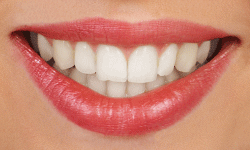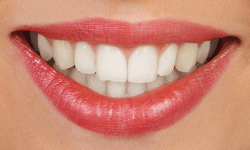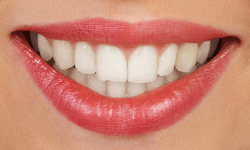BRACES
Getting Braces in King of Prussia
Getting braces in King of Prussia with Dr. O’Keeffe is a great decision! So now you have braces…what now? No worries, we have braces options to fit every need. Below is some basic information, but the FAQ section is where you will find the answers you are really looking for. Also, keep in mind that we are there for you as well. So remember, no question is a stupid question and, if you schedule a complimentary exam you’ll get all the info you need to make the right choice for you and your family!
KINDS OF BRACES
Choosing the Style That’s Right For You
Metal Braces
These are the most common type of braces and are more comfortable today than ever before. Dr. O’Keeffe uses the lowest profile braces available, resulting in maximum comfort for the lips and cheeks. Made of high-grade stainless steel, these braces were carefully selected by Dr. O’Keeffe because they allow them to straighten your teeth and bite with exceptional precision and accuracy. With metal braces, you have the option of adding elastic ligatures (“donuts”) to hold the archwires in place in single or multi-colors to suit your fashion sense.

Ceramic Braces
Unlike traditional ceramic brackets that are opaque and colored to mimic a particular tooth shade, Dr . O’Keeffe uses ceramic brackets that are crystal clear and virtually disappear regardless of your tooth shade. They are also the lowest profile ceramic braces on the market and are manufactured with an innovative boron tumbling process that provides a smooth surface to greatly enhance patient comfort.

Invisalign®
No one can tell you are wearing Invisalign® because it’s invisible. Invisalign® is a series of clear, removable “aligners” that straighten your teeth and bite, under the careful planning of Dr. O’Keeffe. Because the aligners are removable, you can eat and drink what you want while in treatment. Plus, brushing and flossing are easy because there are no wires connecting the teeth. The aligners are comfortable and have no metal to cause mouth abrasions during treatment.
Dr. O’Keeffe is a certified Invisalign® Gold+ Provider.

BRACES FAQS
Your Questions, Answered.
Everyone has questions about braces…it’s a big deal! Hopefully some of the most common questions you have will be answered below. If not, don’t hesitate to reach out to Dr. O’Keeffe or her staff as they are always available to help!
What is orthodontics?
Orthodontics is the branch of dentistry that specializes in the diagnosis, prevention, and treatment of dental and facial irregularities.
What is an orthodontist?
An orthodontist is a specialist who has completed an advanced education program of at least two years following dental school to learn the special skills required to manage tooth movement and guide facial development.
What are some possible benefits of orthodontic treatment?
- A more attractive smile
- Reduced appearance consciousness during critical development years
- Better function of the teeth
- Possible increase in self-confidence
- Increased ability to clean the teeth
- Improved force distribution and wear patterns of the teeth
- Better long-term health of teeth and gums
- Guides permanent teeth into more favorable positions
- Reduces the risk of injury to protruded front teeth
- Aids in optimizing other dental treatment
What are some signs that braces may be needed?
- Upper front teeth protrude excessively over the lower teeth, or are bucked
- Upper front teeth cover the majority of the lower teeth when biting together (deep bite)
- Upper front teeth are behind or inside the lower front teeth (underbite)
- The upper and lower front teeth do not touch when biting together (open bite)
- Crowded or overlapped teeth
- The center of the upper and lower teeth do not line up
- Finger or thumb sucking habits which continue after six or seven years old
- Difficulty chewing
- Teeth wearing unevenly or excessively
- The lower jaw shifts to one side or the other when biting together Spaces between the teeth
At what age should orthodontic treatment occur?
Orthodontic treatment can be started at any age. Many orthodontic problems are easier to correct if detected at an early age before jaw growth has slowed. Early treatment may mean that a patient can avoid surgery and more serious complications. The American Association of Orthodontists recommends that every child first visit an orthodontist by age 7 or earlier if a problem is detected by parents, the family dentist, or the child’s physician.
What is Phase I and Phase II treatment?
Phase I, or early interceptive treatment, is limited orthodontic treatment (i.e. expander or partial braces) before all of the permanent teeth have erupted. Such treatment can occur between the ages of six and ten. This treatment is sometimes recommended to make more space for developing teeth, correction of crossbites, overbites, underbites, or harmful oral habits. Phase II treatment is also called comprehensive treatment because it involves full braces when all of the permanent teeth have erupted, usually between the ages of eleven and thirteen.
Would an adult patient benefit from orthodontics?
Orthodontic treatment can be successful at any age. Everyone wants a beautiful and healthy smile. Twenty to twenty five percent of orthodontic patients today are adults.
How does orthodontic treatment work?
Braces use steady, gentle pressure to gradually move teeth into their proper positions. The brackets that are placed on your teeth and the archwire that connects them are the main components. When the archwire is placed into the brackets, it tries to return to its original shape. As it does so, it applies pressure to move your teeth to their new, more ideal positions.
How long does orthodontic treatment take?
Treatment times vary on a case-by-case basis, but the average time is from one to two years. Actual treatment time can be affected by rate of growth and severity of the correction necessary. Treatment length is also dependent upon patient compliance. Maintaining good oral hygiene and keeping regular appointments are important in keeping treatment time on schedule.
Do braces hurt?
The placement of bands and brackets on your teeth does not hurt. Once your braces are placed and connected with the archwires you may feel some soreness of your teeth for one to four days. Your lips and cheeks may need one to two weeks to get used to the braces on your teeth.
Will braces interfere with playing sports?
No. It is recommended, however, that patients protect their smiles by wearing a mouth guard when participating in any sporting activity. Mouth guards are inexpensive, comfortable, and come in a variety of colors and patterns.
Will braces interfere with playing musical instruments?
No. However, there may be an initial period of adjustment. In addition, brace covers can be provided to prevent discomfort.
Should I see my general dentist while I have braces?
Yes, you should continue to see your general dentist every six months for cleanings and dental checkups.


